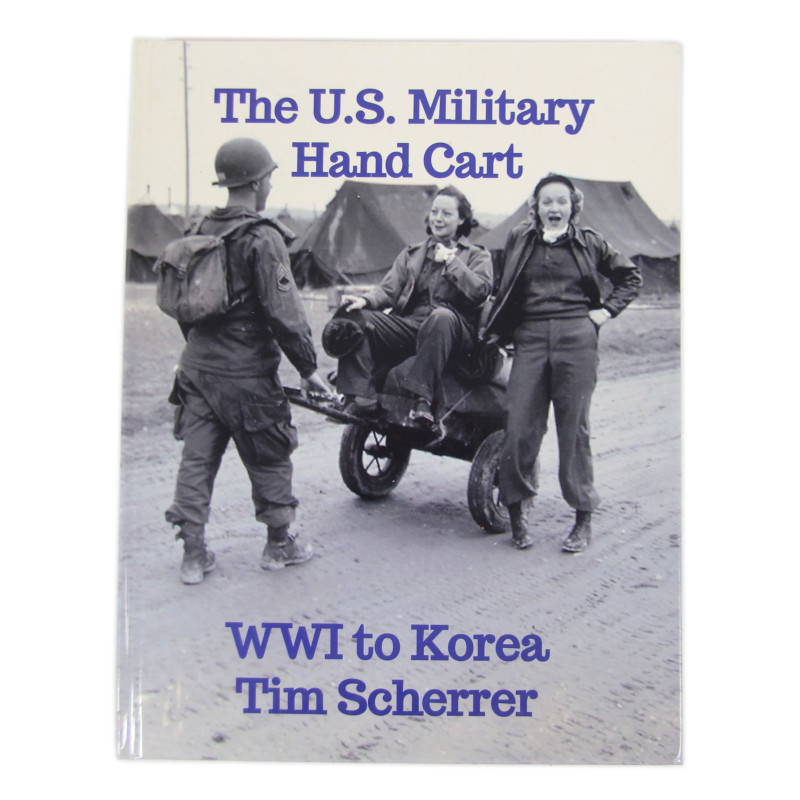






The U.S. Military Hand Cart was a staple of the Army and Marine Corps from WWI through WWII. Whether it was carrying weapons or logistics, these small carts earned a respected spot in field environments. Starting with the WWI era wooden carts, they evolved into sophisticated carriers that were easily transportable assisting the soldiers of assignment.
The U.S. used 22 different cart models from 1917 through 1953 with a small number being retained through the Vietnam War. A variation of the stretcher cart is still used today by the Medical Corps. Significant new information is presented here to include cart production contracts, the testing of the Infantry Board in 1935-36 as well as the different variations on carts. The manual for the widest produced military cart, the M3A4, is also reprinted as an appendix.
Much if this history has never been documented and presented before as this is the first book on hand carts. The book reflects the research of several larger hand cart collectors like Craig Johnson, Mark Van Klaveren, and Robin Bartel. Their collections combined are represented in this book.
Hard cover, 252 pages.

The U.S. Military Hand Cart was a staple of the Army and Marine Corps from WWI through WWII. Whether it was carrying weapons or logistics, these small carts earned a respected spot in field environments. Starting with the WWI era wooden carts, they evolved into sophisticated carriers that were easily transportable assisting the soldiers of assignment.
The U.S. used 22 different cart models from 1917 through 1953 with a small number being retained through the Vietnam War. A variation of the stretcher cart is still used today by the Medical Corps. Significant new information is presented here to include cart production contracts, the testing of the Infantry Board in 1935-36 as well as the different variations on carts. The manual for the widest produced military cart, the M3A4, is also reprinted as an appendix.
Much if this history has never been documented and presented before as this is the first book on hand carts. The book reflects the research of several larger hand cart collectors like Craig Johnson, Mark Van Klaveren, and Robin Bartel. Their collections combined are represented in this book.
Hard cover, 252 pages.
The historical artifacts for sale at PARATROOPER’s are intended for collectors, history enthusiasts, historians and museum curators.
These items do not glorify or promote any of the political, ideological or racial opinions related to the global conflicts that bathed the 20th century in blood.
Besides, we remind you that Article R.645-1 of the French Penal Code establishes fines applicable to fifth class contraventions (except in the specific cases of a filming, show or exhibition which refer to historical events) for any individual who wears a uniform, insignia or symbol reminiscent of those worn by members of the various organizations declared criminal in application of Article 9 of the Charter of the International Military Tribunal annexed to the London Agreement of August 8, 1945 – SS, SD, Gestapo, Nazi leaders (the Führer, the Reichsleitung, the Gauleiters and their main collaborators, the Ortsgruppenleiter, the Zellenleiter and the Blockleiter), or reminiscent of those worn by any person found guilty, by a French or International Jurisdiction, of one or several crimes against humanity established by Articles 211-1 to 212-3 or mentioned in Law No. 64-1326 of December 26, 1964.
The Code provides additional penalties, including the confiscation of the items used or intended for committing the offence.
